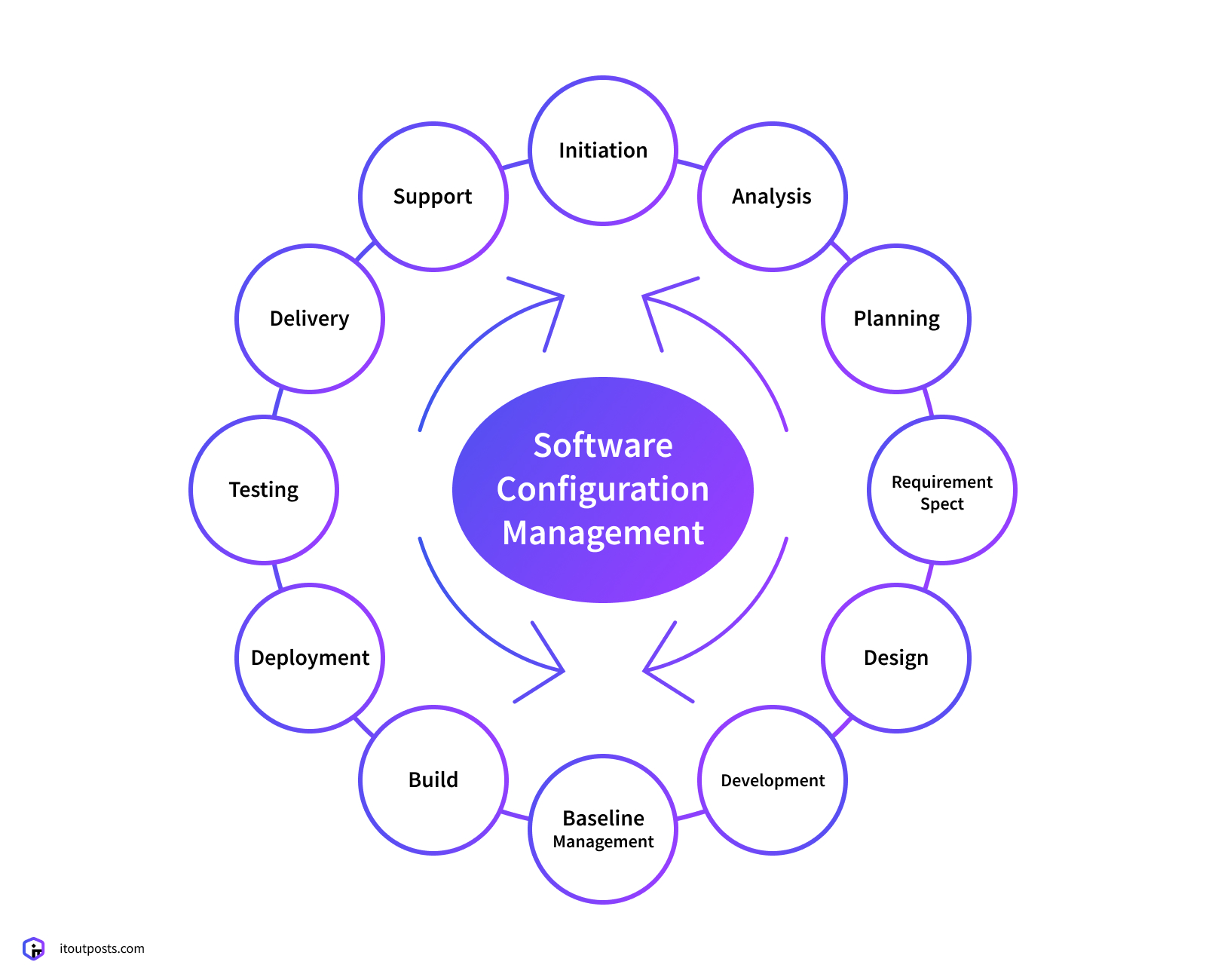In today's interconnected world, IoT configuration management tools have become indispensable for businesses and organizations managing complex IoT ecosystems. These tools streamline the process of configuring, monitoring, and maintaining IoT devices, ensuring optimal performance and security. With the rapid growth of IoT devices, the need for efficient management solutions has never been more critical. IoT configuration management tools help organizations overcome challenges such as device heterogeneity, scalability, and security threats, making them essential for any IoT deployment.
As the IoT landscape continues to expand, businesses face increasing complexity in managing diverse devices and platforms. IoT configuration management tools offer centralized control, allowing administrators to efficiently manage device configurations, update firmware, and monitor performance metrics. These tools not only simplify operational processes but also enhance security by enabling automated compliance checks and vulnerability assessments across all connected devices.
The importance of selecting the right IoT configuration management tools cannot be overstated. With numerous options available in the market, organizations must carefully evaluate their specific requirements and choose solutions that align with their business objectives. From small-scale deployments to enterprise-level implementations, these tools provide the necessary framework for maintaining device consistency, ensuring data integrity, and optimizing resource utilization across IoT networks.
Read also:Discovering Little Oral Andie The Rising Star In Entertainment
- What are the Core Functions of IoT Configuration Management Tools?
- How Do IoT Configuration Management Tools Enhance Security?
- Which IoT Configuration Management Tools are Leading the Market?
- Why are IoT Configuration Management Tools Essential for Scalability?
- What are the Key Features to Look for in IoT Configuration Management Tools?
- How Can Organizations Implement IoT Configuration Management Tools Effectively?
- What are the Common Challenges in Using IoT Configuration Management Tools?
- How Do IoT Configuration Management Tools Support DevOps Practices?
- What is the Future of IoT Configuration Management Tools?
- How Can IoT Configuration Management Tools Improve Business Outcomes?
What are the Core Functions of IoT Configuration Management Tools?
IoT configuration management tools serve several critical functions that make them indispensable for modern IoT deployments:
- Device Provisioning and Configuration: Automates the setup and initial configuration of IoT devices.
- Software and Firmware Updates: Enables seamless deployment of updates across all connected devices.
- Configuration Drift Management: Monitors and corrects configuration changes that deviate from desired states.
- Inventory Management: Maintains an up-to-date record of all IoT devices and their configurations.
- Compliance Monitoring: Ensures devices adhere to organizational and regulatory standards.
How Do IoT Configuration Management Tools Enhance Security?
Security remains a top concern in IoT deployments, and configuration management tools play a crucial role in addressing these challenges:
- Automated Vulnerability Scanning: Regularly checks devices for known security vulnerabilities.
- Access Control Management: Implements role-based access controls for device management.
- Encryption Management: Ensures secure communication between devices and management systems.
- Security Policy Enforcement: Automatically applies and maintains security policies across all devices.
Which IoT Configuration Management Tools are Leading the Market?
Several IoT configuration management tools have emerged as industry leaders, each offering unique capabilities:
- Tool A: Known for its robust device provisioning capabilities.
- Tool B: Offers exceptional security features and compliance management.
- Tool C: Specializes in large-scale IoT deployments and scalability.
- Tool D: Provides comprehensive analytics and reporting features.
Why are IoT Configuration Management Tools Essential for Scalability?
As IoT deployments grow, managing thousands or even millions of devices becomes increasingly complex. IoT configuration management tools address this challenge by:
- Providing centralized control for large device fleets.
- Enabling automated configuration updates across multiple devices simultaneously.
- Supporting diverse device types and protocols.
- Facilitating efficient resource allocation and utilization.
What are the Key Features to Look for in IoT Configuration Management Tools?
When evaluating IoT configuration management tools, consider these essential features:
- Comprehensive Device Support: Ensures compatibility with various IoT devices and protocols.
- Real-time Monitoring: Provides instant visibility into device status and performance.
- Automated Compliance Checks: Maintains regulatory adherence across all devices.
- Customizable Reporting: Generates detailed analytics and performance metrics.
How Can Organizations Implement IoT Configuration Management Tools Effectively?
Successful implementation requires careful planning and execution:
Read also:Discovering The World Of Nina Ariande A Comprehensive Guide
- Conduct thorough needs analysis before tool selection.
- Develop clear implementation roadmaps and milestones.
- Provide comprehensive training for technical staff.
- Establish robust change management processes.
What are the Common Challenges in Using IoT Configuration Management Tools?
While beneficial, these tools can present certain challenges:
- Initial setup complexity and learning curve.
- Integration with existing systems and protocols.
- Maintaining tool effectiveness as IoT ecosystems evolve.
- Balancing security requirements with operational efficiency.
How Do IoT Configuration Management Tools Support DevOps Practices?
These tools integrate seamlessly with DevOps methodologies by:
- Enabling continuous integration and deployment for IoT applications.
- Supporting infrastructure as code (IaC) principles.
- Facilitating automated testing and quality assurance.
- Providing version control for device configurations.
What is the Future of IoT Configuration Management Tools?
The future looks promising with several emerging trends:
- Increased AI and machine learning integration for predictive maintenance.
- Enhanced edge computing capabilities.
- Improved cross-platform compatibility.
- Greater focus on sustainability and energy efficiency.
How Can IoT Configuration Management Tools Improve Business Outcomes?
Organizations can achieve significant benefits through proper implementation:
- Reduced operational costs through automation.
- Improved device uptime and reliability.
- Enhanced security posture and compliance.
- Better resource utilization and efficiency.
As the IoT landscape continues to evolve, the role of IoT configuration management tools becomes increasingly vital. These tools not only address current challenges but also pave the way for future innovations in device management and network optimization.
By investing in the right IoT configuration management tools and implementing them effectively, organizations can unlock the full potential of their IoT deployments while maintaining security, scalability, and operational efficiency. As technology advances, these tools will continue to adapt and improve, providing even greater value to businesses across various industries.
Remember that successful IoT management requires ongoing evaluation and adaptation. Regularly assess your IoT configuration management tools to ensure they continue meeting your organization's evolving needs and industry standards. With the right approach and tools in place, your IoT infrastructure can become a powerful asset driving business growth and innovation.

